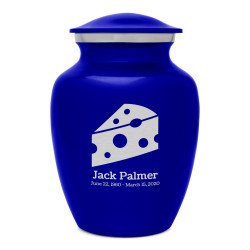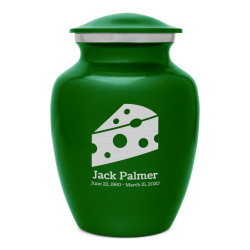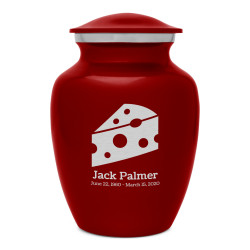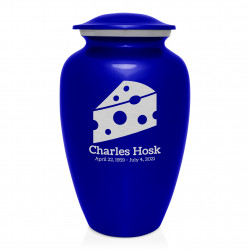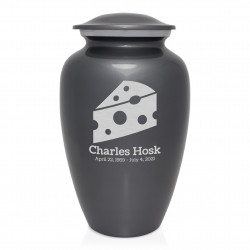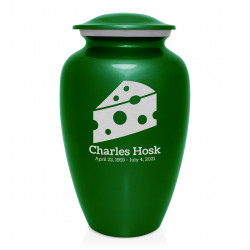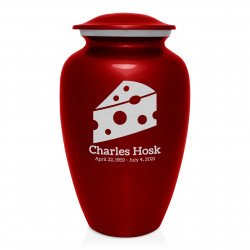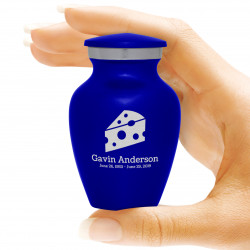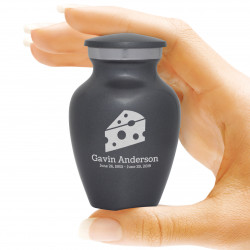Filter By
Color
Color
Size
Size
Cheese Urns
In Denmark they call it ost, in Turkey they call it peynir, in Mexico they call it queso, but here we call it cheese. This is a food that is found all over the world. Wherever there is milk, there will be some sort of cheese; and why not? It's one of the most delicious foods out there, and can be found in a wide range of textures, tastes, and smells. The world of cheese is a large one, and it has found an important place in the lives and diets of many.
There are 21 products.
Why Cheese?
Perhaps the greatest importance of cheese originally was not its delicious taste, but rather that it was a way to preserve milk in the pre-refrigeration eras. While raw milk would begin to sour very shortly in warm temperatures, cheese could last for months and only get better over time.
Fermentation was a common means of food preservation, as we see with German sauerkraut, Korean kimchi, pickles, etc. Someone tried fermenting milk, and introduced humanity to cheese!
A single cow can produce 7-8 gallons of milk per day. Beyond butter and basic drinks, the average family needed a way to utilize the rest of the supply; cheese was a perfect solution.
Cheese and Culture
As far as we know, cheese has been around ever since dairy animals were domesticated. Cheese was made primarily from goat and sheep milk in the earliest days among the nomads of the Middle East. The Romans also loved cheese, and they spread the knowledge of it further up into Europe.
Beyond the cultures of human civilization, there was a growing knowledge of another culture; the culture of the cheese.
How is Cheese Made?
We don't know for sure who the first person was who discovered the amazing result of letting specific bacteria grow in milk, but they should've been given an award! Yes, there is bacteria in cheese; that's what causes the whey to separate from the curds. The bacteria eats the natural sugars in the milk and produces lactic acid. This creates the curdling process. The curds are then separated from the whey.
Soft cheeses (such as cottage cheese and paneer) do not need further aging, but hard cheeses like cheddar or Swiss require the curds to be pressed, sealed, and set aside in a cool dark place for an extended length of time. The cheese continues to ripen as the bacteria absorbs the remaining sugars. The older the cheese, the sharper the taste.
Varieties of Cheese
As it has been already stated, cheese comes in a vast array of options. There are creamy queso dips, the popular American cheese slice that adorns the casual sandwich, Mozzarella (the favorite cheese for pizza and lasagna), crumbly feta and chèvre to toss in salads, and then there are... the stinky cheeses, like Limburger, Gorgonzola, and Munster.
Ever heard of horse cheese? In Central Asia, the modern nomads make cheese from the milk of their mares; they call it Airag.
Some cheeses are so fancy that they take a special kind of eater to appreciate them. These connoisseurs of cheese are called turophiles, and they know the difference between penicillium roqueforti and cheese that has simply been in the fridge for too long.
Remembered Forever
Whether your loved one was a long-time dairy farmer, a crafter of fine homemade cheeses, or simply enjoyed eating cheese, you can remember them and their love for this delicious dairy food with a custom engraved cheese-themed cremation urn. These unique urns are the perfect choice to keep alive the good memories of who your loved one was, and what they enjoyed in life.


